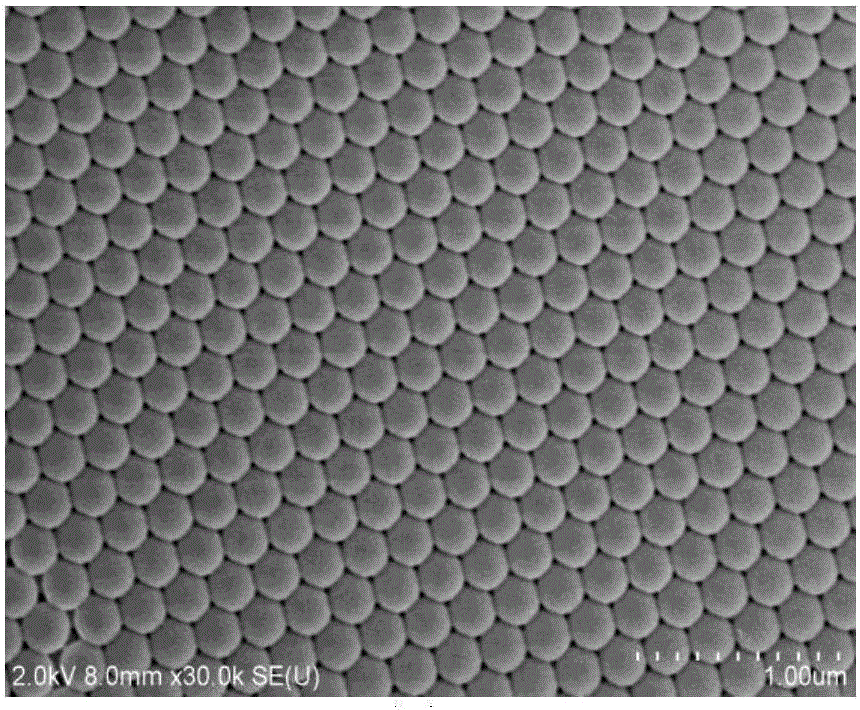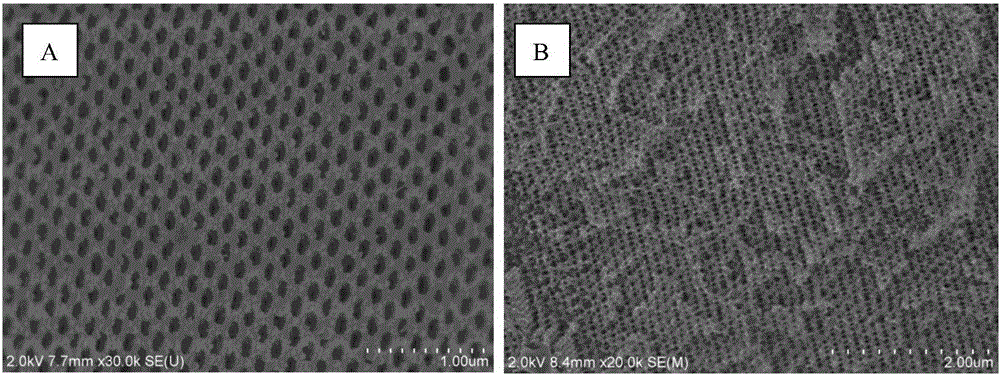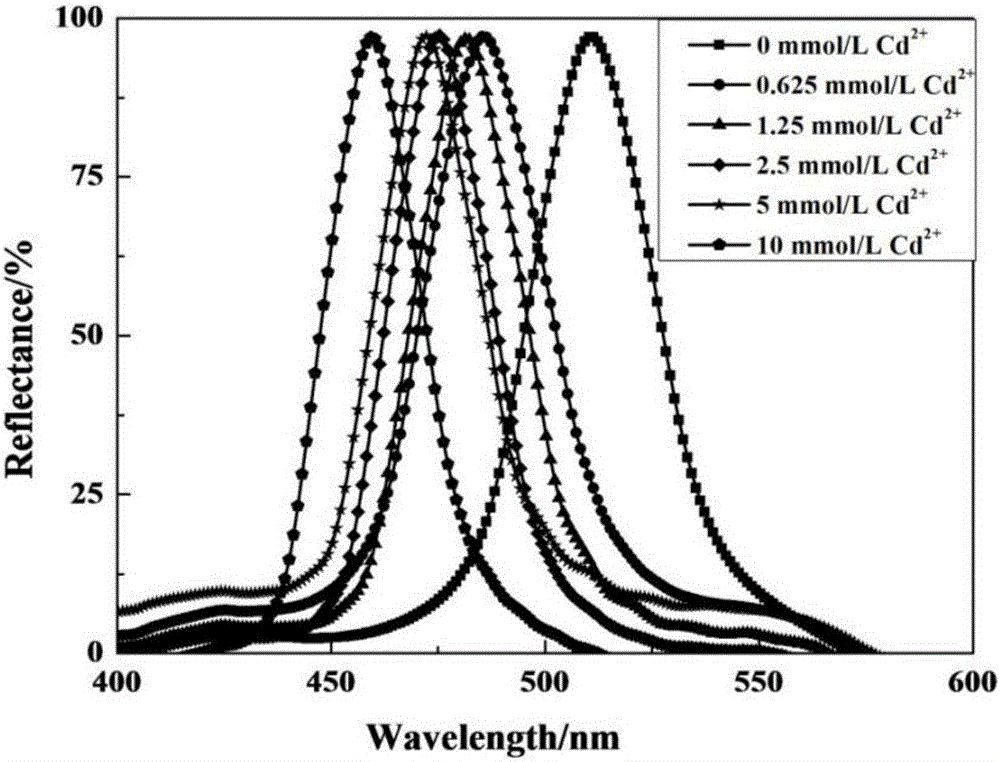Inverse-opal hydrogel photonic crystal sensing film capable of realizing naked-eye detection of concentration of cadmium ion
A photonic crystal and inverse opal technology, applied in the measurement of color/spectral properties, analysis by chemical reaction of materials, and material analysis by observing the effect on chemical indicators, which can solve problems such as cumbersome operations and complicated instruments. , to achieve the effect of good mechanical and chemical stability, good reusable performance
- Summary
- Abstract
- Description
- Claims
- Application Information
AI Technical Summary
Problems solved by technology
Method used
Image
Examples
Embodiment 1
[0021] Example 1: Preparation of polystyrene microspheres and colloidal crystal templates
[0022] Using styrene as the main monomer, acrylic acid as the crosslinking monomer, ammonium persulfate as the initiator, and double distilled water as the solvent, a polystyrene-acrylic acid microsphere emulsion with a dispersion coefficient of 0.005 was prepared by using a soap-free emulsion polymerization method ( Hereinafter referred to as PS emulsion), a certain amount of PS emulsion with a solid content of 1% was taken out, dispersed evenly by ultrasonic vibration, and then used for later use. Add 20mL of PS microsphere emulsion with a mass fraction of 1% into a 25mL beaker, then insert two hydrophilic treated glass slides into the beaker vertically, and place the beaker at a constant temperature and temperature at 60°C and a humidity of 40%. Wet box, after the water is completely evaporated, the PS colloidal crystal template with a single color can be obtained.
Embodiment 2
[0023] Example 2: Preparation of PAM / PATU gel photonic crystal sensing film with inverse opal structure
[0024] Dissolve AM (32.4mmol), ATU (1.2mmol), APS (0.48mmol), BIS (1.3mmol) in 13mL deionized water, mix well, and then pass through N 2 10min to remove O from the solution 2 Obtain the pre-poly solution for later use. Place a clean glass slide on the surface of the prepared PS colloidal crystal template, and fix it with clips on both sides to form a similar "sandwich" structure. Place the PS colloidal crystal template of the "sandwich" structure flat on the table, and then slowly drip the pre-polymerization solution drop by drop at one end of the template. , when the PS colloidal crystal template becomes transparent, it indicates that the prepolymer liquid is filled. Then it was placed in an oven at 45° C. to thermally initiate the polymerization reaction. After the reaction, the "sandwich" structure was immersed in deionized water, so that the gel photonic crystal f...
Embodiment 3
[0025] Embodiment 3: PAM / PATU gel photonic crystal sensing membrane is the Cd that concentration is 0mmol / L, 2.5mmol / L, 10mmol / L 2+ Solution Spectral Detection
[0026] The prepared gel photonic crystal sensing film was placed in different concentrations (0mmol / L, 0.625mmol / L, 1.25mmol / L, 2.5mmol / L, 5mmol / L, 10mmol / L) of Cd 2+ In the solution, the corresponding Bragg diffraction peak wavelength was measured with a fiber optic spectrometer. When the change of the diffraction peak wavelength does not exceed 3nm, it is considered that the sensing film is sensitive to Cd 2+ The determination reaches equilibrium. The fully responsive sensing membrane was soaked in the eluent (0.8mol / L thiourea-3mol / L HCl) for 10min, then rinsed with deionized water, the experiment was repeated, and corresponding optical photos were taken with a digital camera.
PUM
| Property | Measurement | Unit |
|---|---|---|
| quality score | aaaaa | aaaaa |
Abstract
Description
Claims
Application Information
 Login to View More
Login to View More - R&D
- Intellectual Property
- Life Sciences
- Materials
- Tech Scout
- Unparalleled Data Quality
- Higher Quality Content
- 60% Fewer Hallucinations
Browse by: Latest US Patents, China's latest patents, Technical Efficacy Thesaurus, Application Domain, Technology Topic, Popular Technical Reports.
© 2025 PatSnap. All rights reserved.Legal|Privacy policy|Modern Slavery Act Transparency Statement|Sitemap|About US| Contact US: help@patsnap.com



